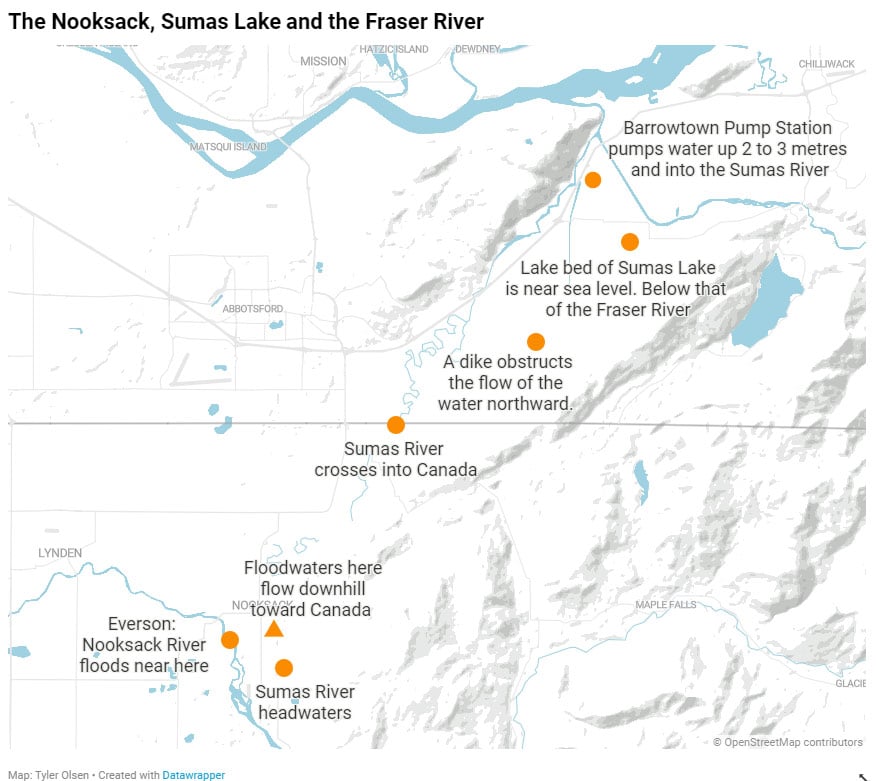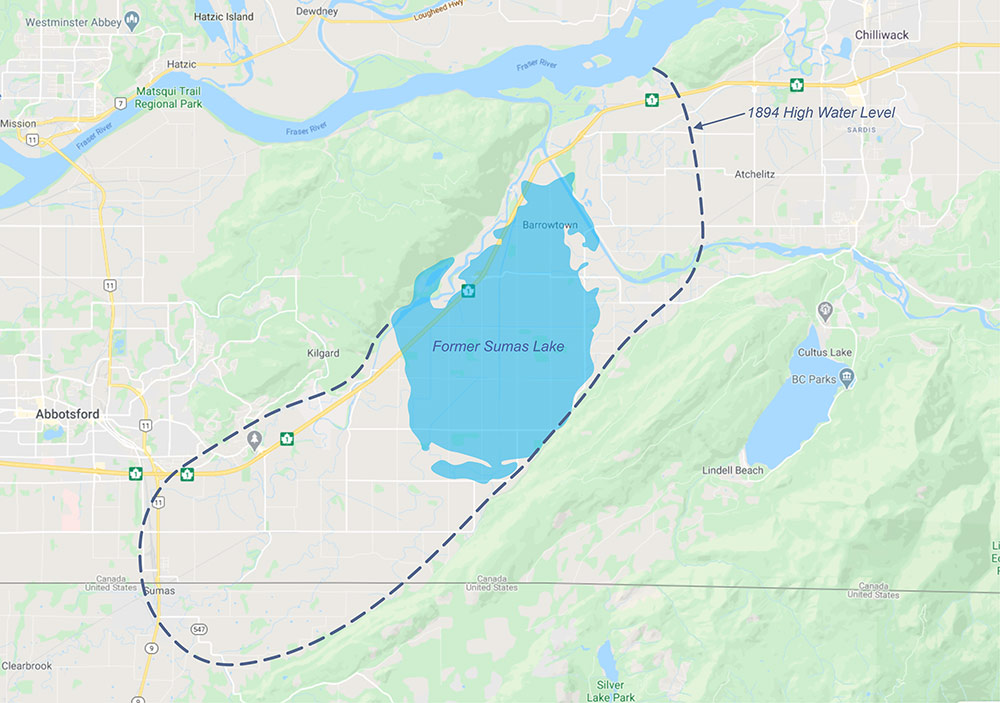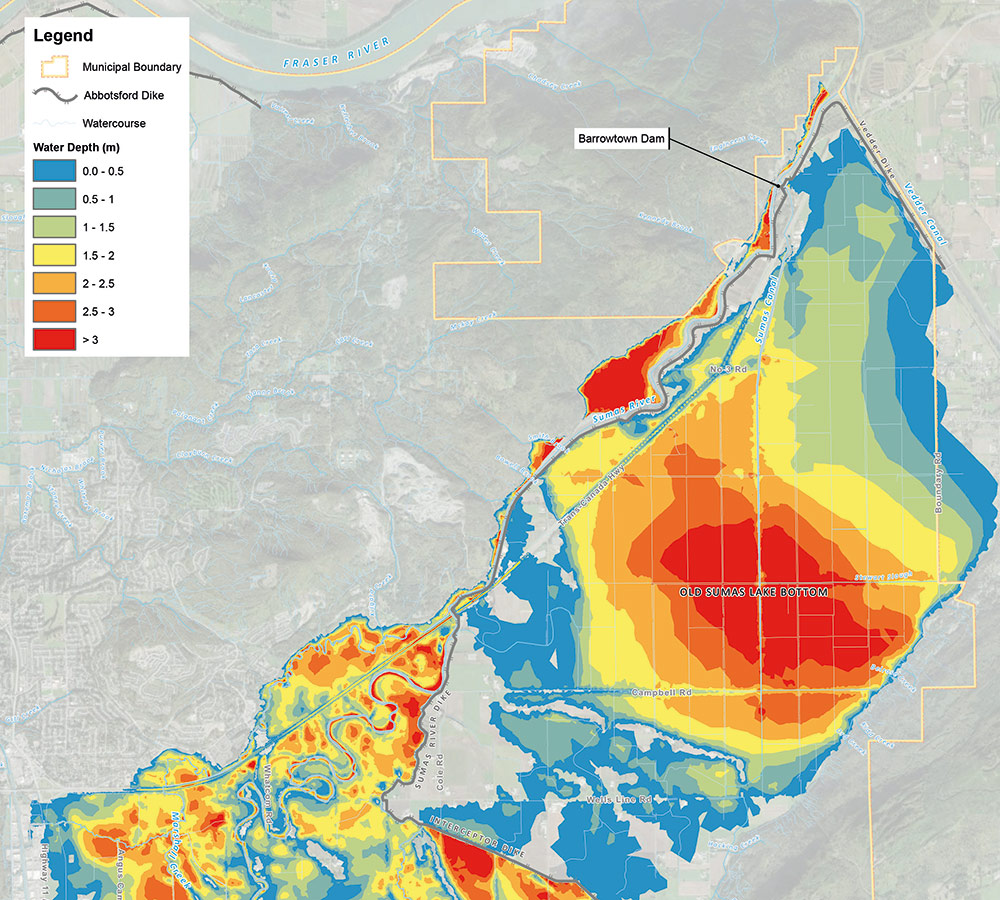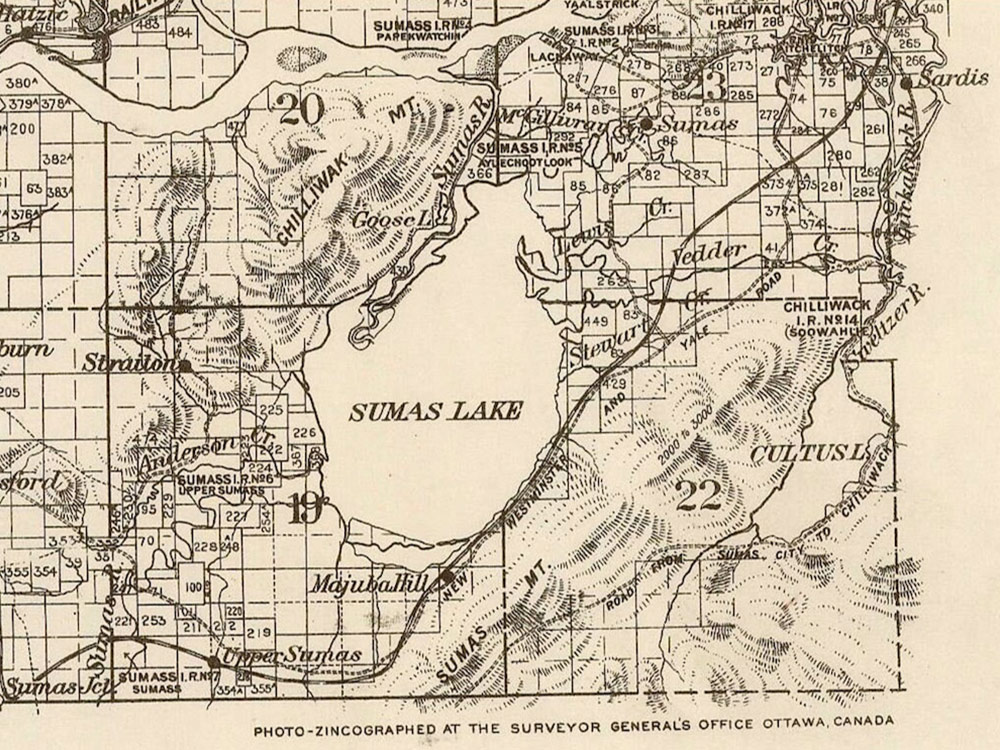B.C. has declared a state of emergency due to flooding and landslides, including in the Sumas Prairie area of the Fraser Valley.
Evacuations, and a “critical” watch on continued water level rise, continue in Abbotsford.
On Nov. 12, an atmospheric river that formed in the Pacific Ocean moved onto North America’s west coast. Torrential rain followed, and on Tuesday the Sumas Prairie flooded, forcing the evacuation of 1,100 homes in Abbotsford.
The floodwaters came from the Nooksack River in Washington. Here’s a map that tracks the path of the water as it crossed into B.C.

Even in a flood, waters from the Nooksack River usually stay within the U.S. But this time, the water headed north and downhill into Canada, prompting Abbotsford Mayor Henry Braun to admit it “may turn out to have been a greater threat than we thought.”
The water breached the Sumas River dike that was supposed to contain such a flood, and began to flood the Sumas Prairie.
At the top right of the map, you’ll see the Barrowtown Pump Station, which sucks water out of the prairie’s fields. On Tuesday night, the City of Abbotsford expected the pump station to be overwhelmed by floodwaters.
The station’s four drainage pumps are the largest in Western Canada and can handle 250,000 gallons a minute, said Braun, but “there is way more that has come into the prairie.”
But 150 people, crews, volunteers and farmers were able to build a sandbag dam to hold the water back and buy the city some time.
Water came close to getting into the Barrowtown station but pumps are holding and good progress being made with the sandbags. Thanks to everyone who came out and continue to work tirelessly thru the night. #wegotthis #chilliwack #abbotsford #bcflood pic.twitter.com/9joVa2kC5p
— Erik Dv (@erikdv) November 17, 2021

The Sumas Prairie was created in 1924, when the Sumas Lake was diked and drained. This was to provide fertile farmland, as well as to avoid floods like one in 1894 when the Fraser River overflowed. At its highest, the water reached just under 8 metres in Mission, B.C.
The Sumas First Nation has tried to seek compensation for the lost lake that the Semá:th people depended on for millennia.

The map above, commissioned by the city last year, shows a worst-case flooding scenario, with floodwater from the Nooksack River and dike and embankment breaches.
The current situation isn’t this bad, and water is already beginning to recede in the Huntingdon neighbourhood near the U.S. border.
Still, Abbotsford’s mayor maintains it is critical.
“We’re not out of this yet,” Braun said Wednesday morning. “The Nooksack is still flowing across our border, and that water is pouring into Sumas Prairie.” ![]()
Read more: Environment, Urban Planning + Architecture
















Tyee Commenting Guidelines
Comments that violate guidelines risk being deleted, and violations may result in a temporary or permanent user ban. Maintain the spirit of good conversation to stay in the discussion.
*Please note The Tyee is not a forum for spreading misinformation about COVID-19, denying its existence or minimizing its risk to public health.
Do:
Do not: